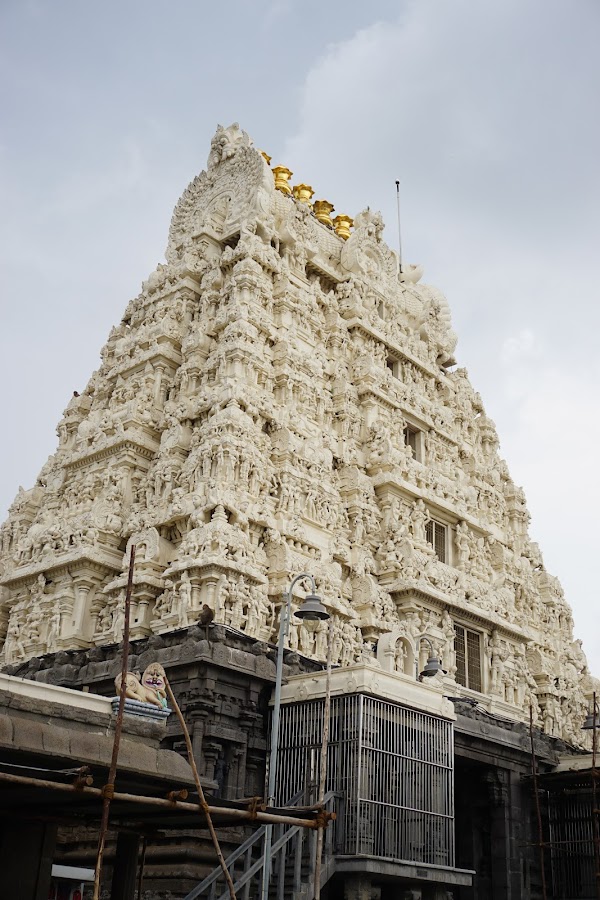
Kamakshi Amman Temple
Kanchipuram, India
- Attend the morning Abhishekam ceremony.
- Explore the intricate sculptures on the gopurams.
- Meditate in the serene temple atmosphere.
- Purchase religious souvenirs and prasadam.
- Witness the vibrant temple festivals.
Known for:
Description:
The Kamakshi Amman Temple is a renowned Hindu temple dedicated to Goddess Kamakshi, a form of Parvati. It's one of the most important Shakti Peethas, believed to be a powerful center of divine feminine energy. The temple's architecture is a classic example of Dravidian style, featuring towering gopurams (gateway towers) adorned with intricate sculptures. The main deity, Goddess Kamakshi, is depicted in a seated posture, radiating peace and compassion. Unlike other Shakti Peethas, there is no separate shrine for Shiva within the temple complex, highlighting Kamakshi's supreme position. The temple is a vibrant hub of religious activity, attracting devotees from all over India, especially during festivals like Navaratri and Aadi Pooram. The atmosphere is filled with devotion, making it a spiritually enriching experience.
History:
The Kamakshi Amman Temple has a rich history dating back to the Pallava dynasty, who were known for their patronage of art and architecture. While the exact origins are debated, historical evidence suggests that the temple existed in some form as early as the 7th century CE. The Cholas and Vijayanagara empires also contributed to the temple's development, adding to its grandeur and expanding its infrastructure. Legend says that Adi Shankaracharya, a prominent Hindu philosopher, visited the temple and established the Sri Chakra, a sacred geometric diagram, before the deity, further solidifying the temple's significance. Over the centuries, the temple has undergone several renovations and expansions, reflecting the changing dynasties and the enduring devotion of the people. Today, it stands as a testament to the rich cultural and religious heritage of Kanchipuram.